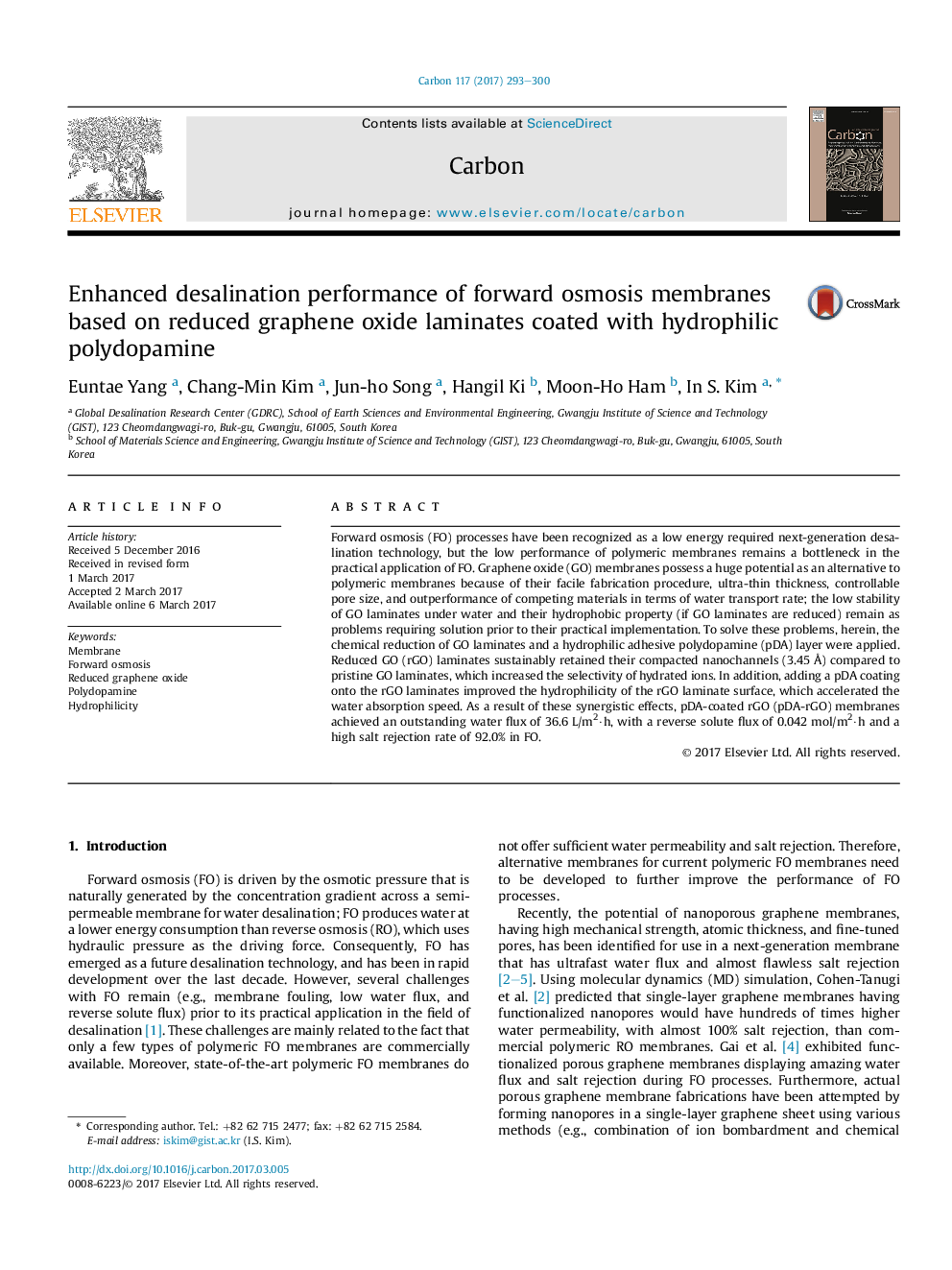| کد مقاله | کد نشریه | سال انتشار | مقاله انگلیسی | نسخه تمام متن |
|---|---|---|---|---|
| 5432368 | 1508830 | 2017 | 8 صفحه PDF | دانلود رایگان |
Forward osmosis (FO) processes have been recognized as a low energy required next-generation desalination technology, but the low performance of polymeric membranes remains a bottleneck in the practical application of FO. Graphene oxide (GO) membranes possess a huge potential as an alternative to polymeric membranes because of their facile fabrication procedure, ultra-thin thickness, controllable pore size, and outperformance of competing materials in terms of water transport rate; the low stability of GO laminates under water and their hydrophobic property (if GO laminates are reduced) remain as problems requiring solution prior to their practical implementation. To solve these problems, herein, the chemical reduction of GO laminates and a hydrophilic adhesive polydopamine (pDA) layer were applied. Reduced GO (rGO) laminates sustainably retained their compacted nanochannels (3.45 à ) compared to pristine GO laminates, which increased the selectivity of hydrated ions. In addition, adding a pDA coating onto the rGO laminates improved the hydrophilicity of the rGO laminate surface, which accelerated the water absorption speed. As a result of these synergistic effects, pDA-coated rGO (pDA-rGO) membranes achieved an outstanding water flux of 36.6 L/m2·h, with a reverse solute flux of 0.042 mol/m2·h and a high salt rejection rate of 92.0% in FO.
223
Journal: Carbon - Volume 117, June 2017, Pages 293-300
